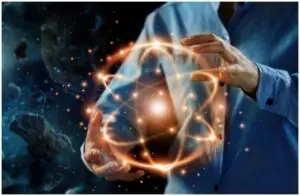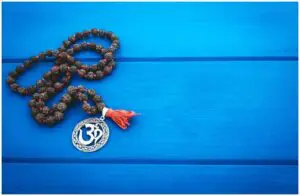Gautama Buddha’s Daily Routine:
Gautama Buddha can be considered the most energetic and the most active of all religious teachers that ever lived on earth.
The entire day Buddha was occupied with His religious activities except when He was attending to His physical needs. He was methodical and systematic in the performance of His daily duties.
His inner life was one of meditation and was concerned with the experiencing of Nibbanic Bliss, while His outer life was one of selfless service for the moral upliftment of the world. Himself enlightened, He endeavored His best to enlighten others and liberate them from the ills of life.
His day was divided into 5 parts, namely, The Forenoon Session, The Afternoon Session, The First Watch, The Middle Watch, and The Last Watch.
The Forenoon Session
Usually, early in the morning, He surveys the world with His Divine Eye to see whom he could help. If any person needs His spiritual assistance, uninvited He goes, often on foot, sometimes by air using His psychic powers, and converts that person to the right path. As a rule, He goes in search of the vicious and the impure, but the pure and the virtuous come in search of Him.
For example, the Gautama Buddha went of His own accord to convert the robber and murderer Angulimala and the wicked demon Alavaka, but pious young Visakha, generous millionaire Anathapindika and intellectual Sariputta and Moggallana came up to Him for spiritual direction.
While rendering such spiritual service to whomsoever it is necessary, if He is not invited to partake of alms by a lay supporter at some particular place, He, before whom Kings prostrated themselves, would go in quest of alms through alleys and streets, with a bowl in hand, either alone or with His disciples.
Standing silently at the door of each house, without uttering a word, He gathers whatever food is offered and placed in the bowl and returns to the monastery.
Indeed, even in His eightieth year when He was old and in indifferent health, He went on His rounds for alms in Vesali. Before midday, He finishes His meals. Immediately after lunch He daily delivers a short discourse to the people, establishes them in the Three Refuges and the Five Precepts and if any person is spiritually advanced, he is shown the Path to Sainthood.
At times He grants Ordination to them if they seek admission to the Order and then retires to His chamber.
The Afternoon Session
After the noon meal, He takes a seat in the monastery and the Bhikkhus assemble to listen to His exposition of the Dhamma.
Some approach Him to receive suitable objects of meditation according to their temperaments; others pay their due respects to Him and retire to their cells to spend the afternoon.
After His discourse or exhortation to His disciples, He Himself retires to His private perfumed chamber to rest. If He so desires, He lies on His right side and sleeps for a while with mindfulness. On rising,
He attains to the Ecstasy of Great Compassion (Maha Karuna Samapatti) and surveys, with His Divine Eye, the world, especially the Bhikkhus who retired to solitude for meditation and other disciples in order to give them any spiritual advice that is needed.
If the erring ones who need advice happen to be at a distance, there He goes by psychic powers, admonishes them and retires to His chamber.
Towards evening the lay followers flock to Him to hear the Dhamma. Perceiving their innate tendencies and their temperaments with the Buddha-Eye, He preaches to them for about one hour. Each member of the audience, though differently constituted, thinks that the Buddha’s sermon is directed in particular to him. Such was the Buddha’s method of expounding the Dhamma.
As a rule, the Buddha converts others by explaining His teachings with homely illustrations and parables, for He appeals more to the intellect than to emotion.
To the average man, the Buddha at first speaks of generosity, discipline, and heavenly bliss. To the more advanced He speaks on the evils of material pleasures and on the blessings of renunciation. To the highly advanced He expounds the Four Noble Truths.
On rare occasions as in the case of Angulimala and Khemadid the Buddha resort to His psychic powers to effect a change of heart in His listeners.
The sublime teachings of the Shakyamuni Buddha appealed to both the masses and the intelligentsia alike. A Buddhist poet sings:
“Giving joy to the wise, promoting the intelligence of the middling, and dispelling the darkness of the dull-witted, this speech is for all people.”
Both the rich and the poor, the high and the low, renounced their former faiths and embraced the new Message of Peace.
The infant Sasana, which was inaugurated with a nucleus of 5 ascetics, soon developed into millions and peacefully spread throughout Central India.
The First Watch
This period of the night extends from six to ten p.m. and was exclusively reserved for instruction to Bhikkhus.
During this time the Bhikkhus were free to approach the Buddha and get their doubts cleared, question Him on the intricacies of the Dhamma, obtain suitable objects of meditation, and hear the doctrine.
The Middle Watch
During this period which extends from ten p.m. to two a.m. Celestial Beings such as Devas and Brahmas, who are invisible to the physical eye, approach the Buddha to question Him on the Dhamma. An oft-recurring passage in the Suttas is:
“Now when the night was far spent a certain Deva of surpassing splendor came to the Buddha, respectfully saluted Him and stood at a side.”
Several discourses and answers given to their queries appear in the Samyutta Nikaya.
The Last Watch
The small hours of the morning, extending from two to six a.m. which comprise the last watch, are divided into 4 parts.
The first part is spent in pacing up and down (cankamana). This serves as a mild physical exercise to Him. During the second part, that is from 3 to 4 a.m. He mindfully sleeps on His right side. During the third part, that is from four to five a.m., He attains the state of Arahantship and experiences Nibbanic bliss.
For one full hour from five to six a.m. He attains the Ecstasy of Great Compassion (Maha Karunasamapatti) and radiates thoughts of loving-kindness towards all beings and softens their hearts. At this early hour, He surveys the whole world with His Buddha-Eye to see whether He could be of service to any.
The virtuous and those that need His help appear vividly before Him though they may live at a remote distance. Out of compassion for them, He goes of His own accord and renders necessary spiritual assistance.
The whole day He is fully occupied with His religious duties. Unlike any other living being, He sleeps only for one hour at night. For 2 full hours in the morning and at dawn He pervades the whole world with thoughts of boundless love and brings happiness to millions.
Leading a life of voluntary poverty, seeking His alms without inconveniencing any, wandering from place to place for 8 months throughout the year preaching His sublime Dhamma, He tirelessly worked for the good and happiness of all till His eightieth year.
According to the Dharmapradipika the last watch is divided into these 4 parts.
According to the commentaries, the last watch consists of three parts. During the 3rd part, the Buddha attains the Ecstasy of Great Compassion.
Source: Venerable Narada Mahathera
READ THIS NEXT: The Best 25 Books On Buddhism
Reference https://kagyuoffice.org/buddhism/shakyamuni-buddha/
- About the Author
- Latest Posts
As a founder and chief author at InsightState.com, Bulgarea Candin helps readers on their spiritual journeys. His writings are designed to inspire creativity and personal growth, guiding readers on their journey to a more fulfilled and enlightened life.




